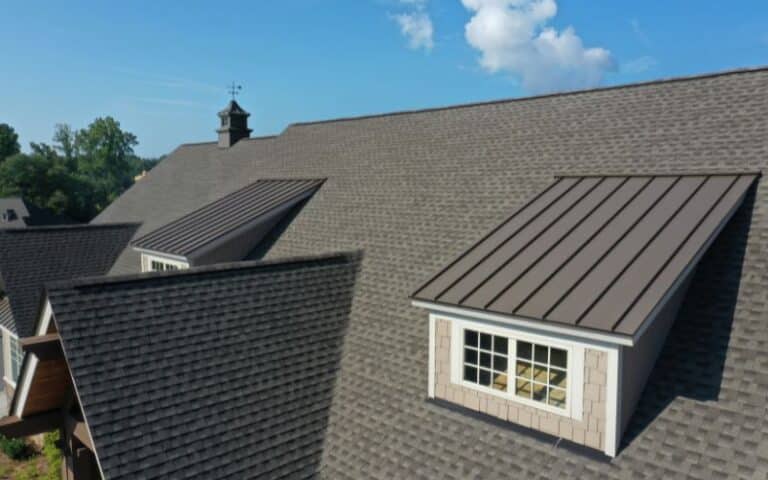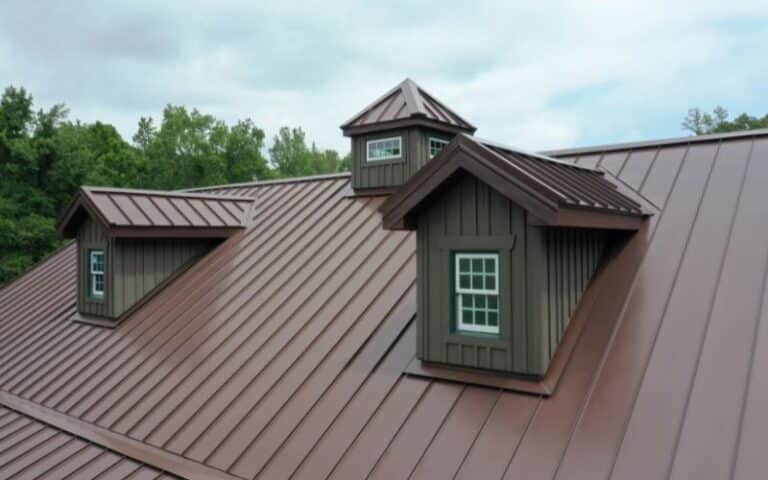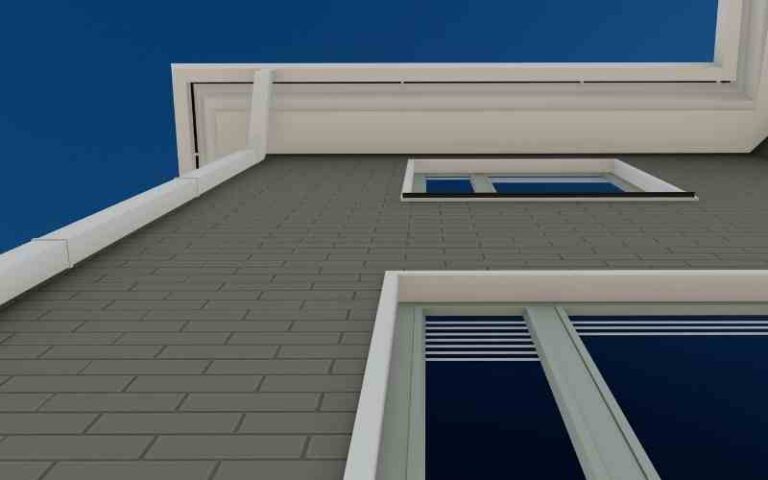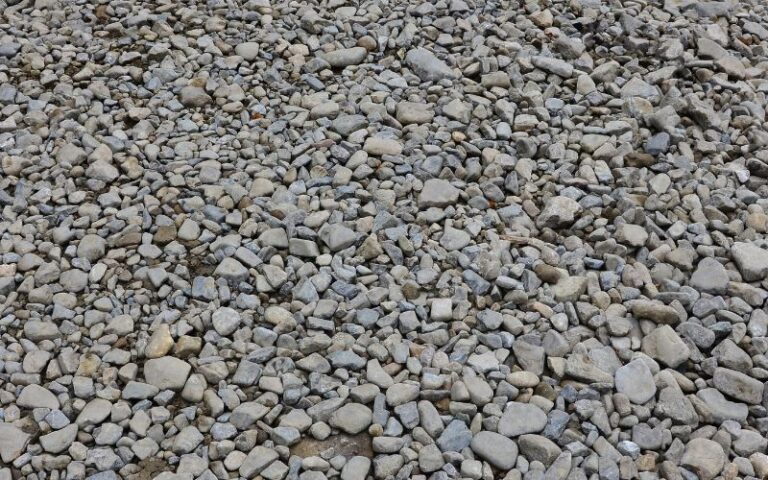Roof tar is primarily used in constructing flat-roofed houses to protect the home from the sun’s ultraviolet rays. It also protects the roof from water and snow that gathers on the roof.
Roof tar is meant to last long on the roof, but some circumstances can result in tar being washed from the roof and dripping into the house or surroundings.
Tar drips from the roof when the roof leaks. Whenever there is rainfall and a roof leaks, tar washed away from the roof mixes with the rainwater and drips through the roof leak. This can be quite problematic and should be fixed immediately.
Ready for a Roofing Quiz?
Why Does Tar Drip From the Roof?
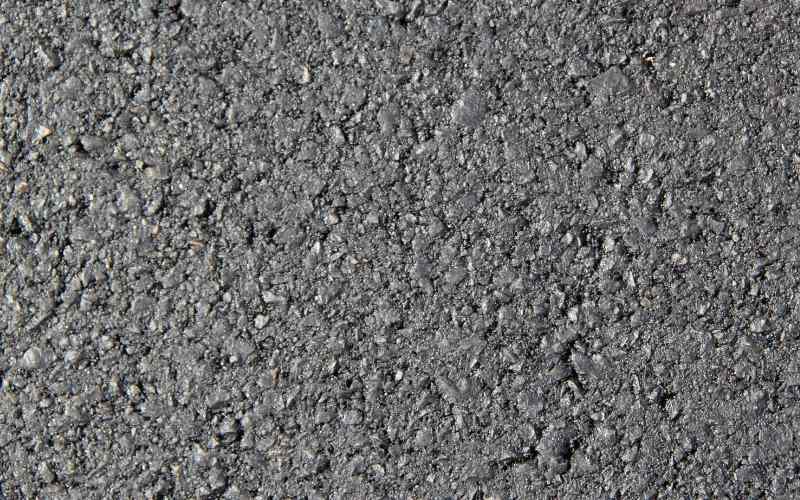
A leaky roof is a major reason why tar drips from the roof, tar washed away by rainwater or melted snow mixes with water and drips through the roof leak.
Roof leaks are caused mainly by weather elements like wind and heavy rainfall.
Tar is used in constructing flat-roofed houses to protect the roof from ultraviolet rays of the sun and water and snow that gathers on flat-roofed structures.
Roof shakes or wood roof shingles are recommended in constructing flat roofs, but in some cases, some roofers decide to use shingles instead.
Shingles on flat roofs are a bad idea because they are not sealed and will result in a leaky roof. It is advisable to use a rolled or rubber roofing material before laying shingles over.
Tar and gravel roofs are commonly used in the construction of flat-roofed buildings. Tar and gravel are used in flat roofs to protect the underlayment of Built-Up Roofs (BURs) and hold down the roofing material.
The layer of gravel prolongs the life span of the roof. The gravel is buried on the topcoat of asphalt and protects underlayment against the sun’s ultraviolet rays, roof hail damage, and heavy rainfalls.
A tar and gravel roof repair is done by patching the roof membrane. You can patch it up with a layer of roofing tar. You can also fix internal leaks in the inner ceiling by applying roofing tar.
Contact a roofing professional to fix the roof permanently. The contractor would check the roof damage and determine the kind of roof leak repair and the roof’s life span.
Furthermore, another cause of roof leaks is broken or damaged roof shingles. Heavy rainfall and wind can displace roof shingles, thereby leaving gaps between the roof so that water can seep through.
If some shingles or whole shingles are missing, you would need to replace the entire shingles.
A cracked or torn shingle can be replaced individually or fixed with a roof sealant.
If your asphalt roof shingle is curled, you should know that it has come to the end of its life cycle. You would need to have an entire roof replacement.
Another factor that causes roof leaks that must not be left unattended is cracked flash which happens when the tar used to seal flashings wears off over time, causing rain and wind to create cracks in the roof where water seeps through slowly.
Other causes of leaking roofs include cracked vent booting, Ice dam buildup, wrongly installed skylights, and clogged gutters.
Please pay attention to minor leaks in the roof because they can quickly turn into full-blown damage.
Solutions to Leaky Roofs
When you begin to notice that your roof is leaking, there are possible solutions to fix it permanently or manage the situation until a professional comes.
Here are some solutions for repairing a leaky roof either permanently or temporarily.
#1. Find the Source of Leak
Find the source and cause of the leak. You should always check the roof first to be confident it is the source of the leak. Check the shingles, the roof tiles, and the gutters in your roof correctly.
#2. Clear the Leaky Area
After detecting the cause of the leak, you need to repair it as soon as possible so that it does not escalate. First, you need to clear where the water is coming through and place pails inside the house to collect water dripping through the roof.
Next, move pieces of furniture and appliances from the area to not get damaged by water. You can cover heavy furniture or appliances with plastic covers if you can’t move them.
#3. Patch-up
Patch the source of the leak in the roof by applying roofing tar. Take off the roof tiles to find any internal leaks, and seal off the leak with roofing tar.
Support the patch with plywood or a piece of roof shingle by pushing it against the affected, then apply roof tar.
#4. Install a Cover Material
Install a cover material like Polyethylene (PE) plastic to limit the effect of the leak by collecting the water dripping in. First, you need to measure how much PE plastic is required around the leaky area.
Then, attach the plastic to the area with staples and nails to hold it in place. Please make sure the PE plastic is thick to withstand water.
#5. Replace Shingles
Inspect your shingles to know if you need to replace roof shingles. Curled, bruised, and misplaced shingles can cause a leaking roof.
Use a straightedge and hammer’s nail removal hook to remove old and damaged shingles. Then, install a new one with nails and roofing tar.
You should note that this is a temporary solution and won’t last long; therefore, you need to find a more permanent solution.
Ensure to wear safety gloves to protect your hand from getting cuts when removing shingles. Also, wear rubber boots to avoid slipping.
#6. Install Tarpaulin
If the leaking area is too wide, you can install a tarp. Tarps are useful on too wide roofs and have multiple leaks in different spots.
Hold down the tarp with heavy concrete blocks if your location experiences heavy rain. You can also use nails to hold down the tarp.
#7. Close Opened Joints
You can close roof leaks around the joints with roof sealant or cement. First, clean the area properly and remove debris. Make sure the affected area is dry before adding sealant.
#8. Commercial Roof Replacement
A commercial roof replacement should be considered an option for a roof beyond repair. Loosed areas, discoloration, and blistering indicate that you may have to replace the roof entirely.
Everything You Should Know: Do You Overlap Drip Edge?
Conclusion
A leaking roof majorly causes tar to drip from the roof. It would be best to repair leaky roofs as soon as you notice them so that it doesn’t escalate, but first, you need to identify the cause.
Then, you must contact a professional roofer to fix roof leaks.

